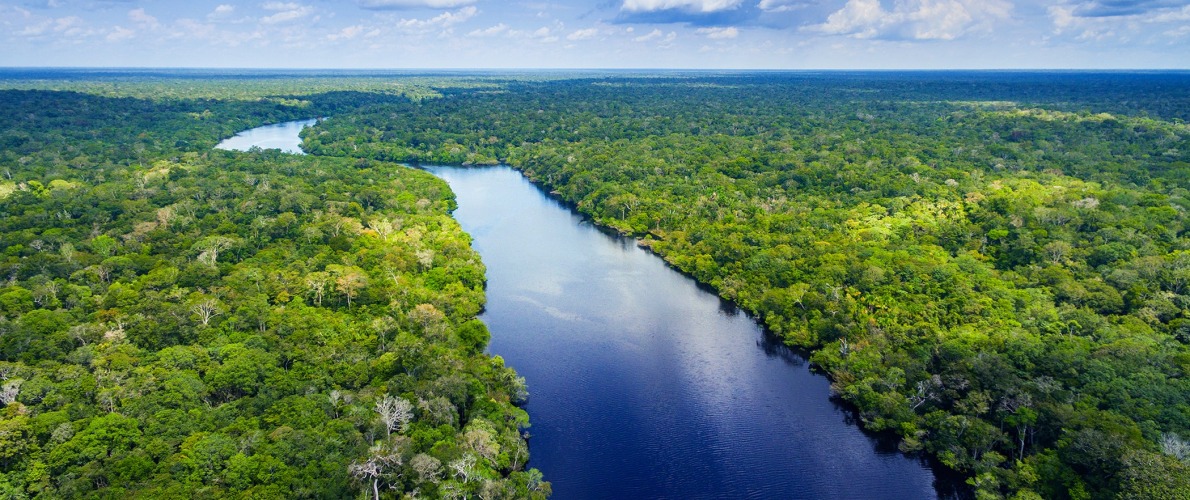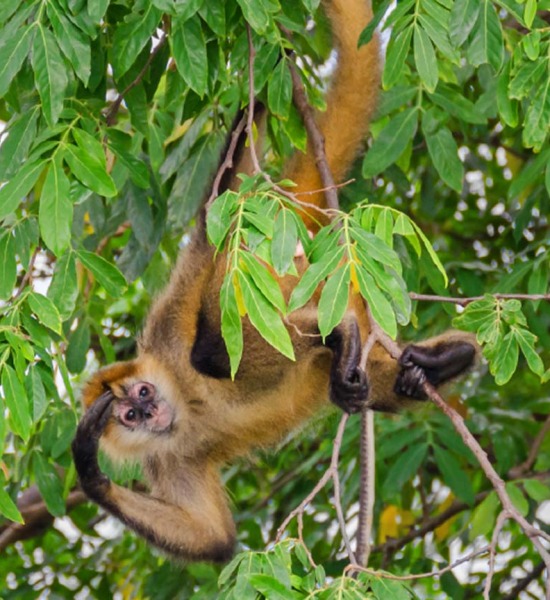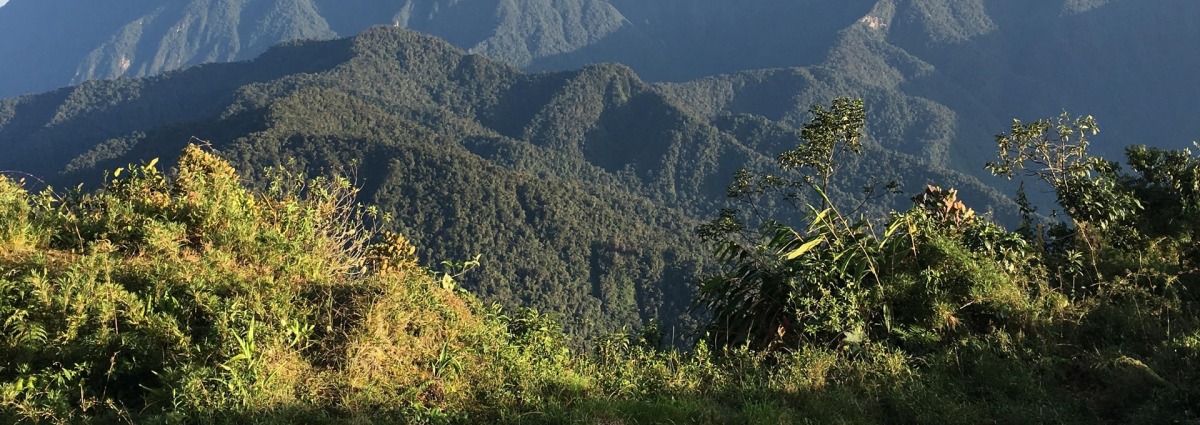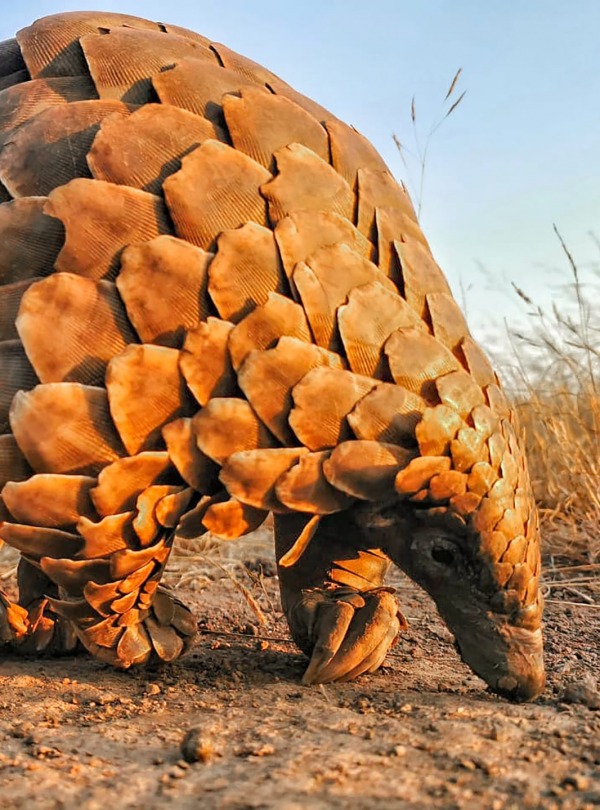
New Safe Haven for Matschie’s Tree-kangaroo
Support More Work Like ThisSupport More Work Like ThisWith vast tracts of pristine forest containing unparalleled biodiversity, Papua New Guinea (PNG) is considered to be one of the last tropical wilderness areas left on earth.
-
Species at Risk
Eastern Long-beaked Echidna (VU), Matschie’s Tree Kangaroo (EN), New Guinea Pademelon (VU), Leatherback Sea Turtle (VU), Wahnes’s Parotia Bird-of-paradise (NT)
-
Carbon stored
(Not Calculated)*
*(metric tons of CO2 equivalents) -
Partner
Tree Kangaroo Conservation Program – Papua New Guinea (TKCP-PNG)
-
233,186 Proposed Acres Conserved by
Designation
-
Project Cost: $244,915

233,186
With vast tracts of pristine forest containing unparalleled biodiversity, Papua New Guinea (PNG) is considered to be one of the last tropical wilderness areas left on earth.
-
Species at Risk
Eastern Long-beaked Echidna (VU), Matschie’s Tree Kangaroo (EN), New Guinea Pademelon (VU), Leatherback Sea Turtle (VU), Wahnes’s Parotia Bird-of-paradise (NT)
-
Carbon stored
(Not Calculated)*
*(metric tons of CO2 equivalents) -
Partner
Tree Kangaroo Conservation Program – Papua New Guinea (TKCP-PNG)
-
233,186 Proposed Acres Conserved by
Designation
-
Project Cost: £184,146

233,186
With vast tracts of pristine forest containing unparalleled biodiversity, Papua New Guinea (PNG) is considered to be one of the last tropical wilderness areas left on earth. Unlike other parts of the world in which deforestation has taken a heavy toll, about 70 percent of PNG’s rainforests remain intact. However, almost all of these rich tropical forests are unprotected and at tremendous risk as oil palm and timber companies have set their sights on them.
Located in eastern PNG, the Huon Peninsula’s rainforests are home to one of the highest concentrations of endemic bird and mammal species on mainland New Guinea. The peninsula’s tropical forests are some of the rarest and most biodiverse ecosystems in the country, containing the Endangered Matschie’s Tree-kangaroo, the Eastern Long-beaked Echidna and a plethora of marsupials and birds.
Since 1996, Rainforest Trust’s local partner, The Tree Kangaroo Conservation Program (TKCP), has been working with local communities and government partners in the Yopno-Uruwa-Som (YUS) watershed of the Huon Peninsula to establish a community conservation area that provides crucial protection for the Matschie’s Tree-kangaroo and other imperiled species. In 2009, TKCP and indigenous groups successfully created the country’s first nationally-recognized Conservation Area, which is protected by local communities.
Fortunately, in 2015, Papua New Guinea’s government updated its national policy on protected areas, substantially restructuring and improving its mechanisms for protected area management. Now, there is greater opportunity for communities to establish conservation areas for wildlife while benefiting local people.
With this new legislation in place, we will help our local partner to expand the existing YUS Conservation Area by 195,759 acres through the creation of a landscape-level “Community Conservation Area.” This first-ever Community Conservation Area in PNG will provide a model that can then be replicated by other indigenous groups to protect key biodiversity areas across PNG.
Between 2016 and 2020, our local partner will lead the process to declare the Community Conservation Area, effectively doubling its current size, while strengthening management and enforcement of the entire Huon peninsula.
Explore Papua New Guinea

Matschies Tree Kangaroo, YUS Conservation Area, by Jonathan Byers

Leatherback Turtle, courtesy of Cocomasur Community Association

Biodiversity
The lush rainforests of the Huon Peninsula are a hotspot of biodiversity, hosting a wide variety of rare and endemic wildlife, including the Endangered Matschie’s Tree-kangaroo.
These woolly, chestnut-colored kangaroos have evolved to live in the dense tree canopy of the area’s mountainous cloud forests. They are considered to be supreme tree climbers because their long tails, approximately the length of their head and body combined, help to offset their balance as they move between trees. In addition to this rare mammal, many other unusual Australasian species exist in the community conservation area such as the Eastern Long-beaked Echidna, which resembles a giant hedgehog with its spiky body, earth-digging claws, and a long nose used to seek our worms and termites in the forest understory. Other marsupials found in the protected area include the Vulnerable New Guinea Pademelon, which is a small wallaby-like species, and the Near Threatened New Guinea Quoll, a cat-sized marsupial predator. Three spectacular and endemic Birds-of-paradise exist within the conservation area and are completely restricted to the Huon Peninsula. These include the Emperor Bird-of-paradise, Wahnes’s Parotia, and Huon Astrapia. Additionally, the beaches adjoining these forests are used as nesting grounds for the Vulnerable Leatherback Sea Turtle while the coastal waters are home to the Vulnerable Dugong, a marine mammal similar to a manatee but with a tail that is fluked like a whale.
Challenges
The greatest threat to the area’s endangered wildlife is habitat loss as a result of deforestation for palm oil, agriculture and localized hunting.
Furthermore, all 50 villages across this peninsula are located near the rainforest and rely on the forest for their food, fuel, and construction needs. Most houses in the region are built from locally-harvested wood while household cooking and heating is fuelled by the burning of wood.
Communities
Spread across 50 remote villages throughout the peninsula, approximately 12,000 people live in the community conservation area, and nearly all of them are indigenous. Under Papua New Guinea’s land tenure system, indigenous clans own and control more than 90% of all land in the country.
Presently, communities rely primarily on subsistence agriculture and hunting as the area is only accessible via light plane, small boat, or on foot. Our partner supports local farmers who have pledged portions of their land to conservation while encouraging the sale and export of conservation-friendly coffee and cocoa. This provides much-needed income for families to cover basic household expenses, including education and healthcare. Additionally, indigenous landowners and community members participate in our partner’s conservation work by assisting with monitoring of wildlife, land mapping, and outreach activities. The success of our partner’s work and the continued effectiveness of conservation efforts depend heavily upon the trust and commitment of local communities.
Solutions
Rainforest Trust is partnering with Tree Kangaroo Conservation Program–Papua New Guinea (TKCP-PNG) to protect 195,759 acres on the Huon Peninsula by establishing the country’s first Community Conservation Area.
The conservation strategy will be implemented in three ways: first, our partner will lead the process of declaring the Community Conservation Area at the landscape level while effectively doubling the current size of the protected area. Secondly, TKCP will work closely with indigenous landowners and the provincial government to build local capacity for monitoring and enforcement through ranger patrol units. Rangers will collect information while mapping endangered species using Spatial Monitoring and Reporting Tools (SMART). This information will be shared with communities to manage their lands and help address conservation issues. Finally, local leadership of conservation efforts is essential. Community leaders will participate actively in management decision-making, together with designated government representatives through the YUS Conservation Area Management Committee. Community participation will ensure the continued commitment of local landowners and foster a supportive environment to conserve the Huon Peninsula’s spectacular landscape and its rich biological treasures.




Partnering to Save the Rainforest
Our partners’ ability to work with their governments and build strong connections with local communities ensures the successful implementation of our projects.
Learn More About This PartnerLearn More About This Partner
